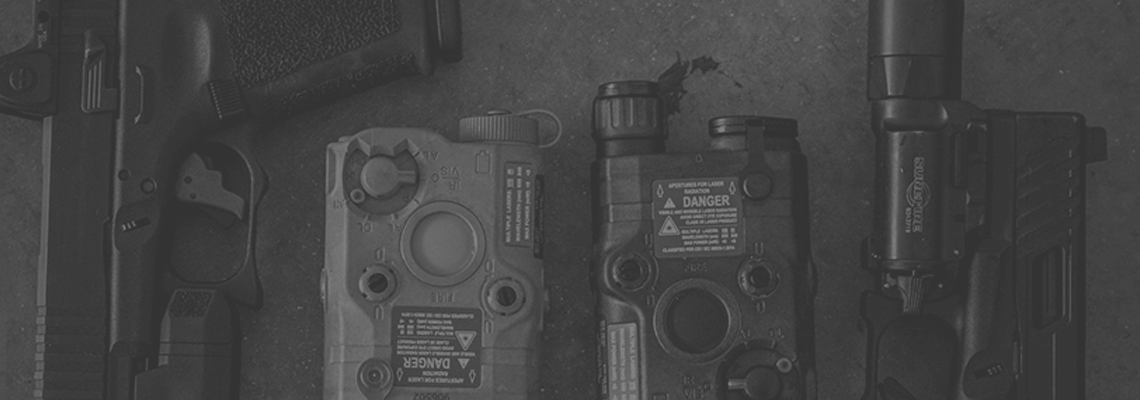
Yes. We keep hard copies of orders starting in 2021. (If you ordered earlier than 2021, you can send your device in and we will be able to obtain the spec sheets.) To request copies of your paperwork, please email orders@steeleindinc.com with the following: First & Last Name, Email, Order #.
We do not have payment plans, but we do have financing options through Credova, as well as Sweetpay. You can find more information about both of those options here: https://steeleindustries.com/financing/
We recommend using lithium batteries for all of our night vision devices. DO NOT use rechargeable batteries. Please make sure batteries are taken out of the device when you are done using it.
We do offer active military, law enforcement, first responders, and medical professionals a discount. To receive the discount code, contact us via email at sales@steeleindinc.com using your work email or sending proof of status via ID card.
The US Food and Drug Administration (FDA) oversees all infrared lasers, which are known as Class IIIb or IEC Class 3B Medical/Industrial Lasers. Class IIIb and IEC Class 3B lasers have output powers ranging from 5 to 500 mW. Only Image Intensifier Night Vision technology can see IR Lasers, which are invisible to the naked eye. IR lasers can cause serious damage to eyes if they are exposed to this, as well as the high intensity at which they operate. Bright light causes a natural aversion in human and animal eyes. The normal response to being exposed is to close or avert one’s eyes. There is no reflexive reaction to look away or near IR lasers because they are invisible to the naked eye. This suggests that the victim can be exposed without even realizing it, resulting in severe injury or permanent blindness. As a result, it’s easy to see why these devices aren’t available for purchase.
If a government or law enforcement department or organization decides to buy an IR laser unit, we will process the PO and send a disclosure form and letter signed by the Chief Law Enforcement Officer or CO to the manufacturer, who will then drop-ship the IR units to the department address. The IR laser systems do not fall into our possession from the manufacturer.
There are no limitations on civilians possessing Night Vision Image Intensifiers or Thermal Imaging Equipment imposed by the government. Individual manufacturers impose restrictions on our website as part of their own company policies, which we must follow. These limitations are normally imposed in response to high demand from the US Department of Defense, and there are simply insufficient units to meet the needs of the civilian sector as well.
Not without valid approval from the US State Department. It is a federal offense to do so without such permission, and you will be sentenced to a federal prison. This isn’t a joke, and claiming “ignorance” won’t help you in court. Night Vision Devices in the United States are highly sensitive goods whose sale is strictly controlled and enforced. The International Traffic in Arms Regulation (ITAR) applies to it, which states
Export of the commodities described herein is strictly prohibited without a valid export license issued by the U.S. Department of State Office of Defense Trade Controls prescribed in the International Traffic in Arms Regulation (ITAR), Title 22 Code of Federal Regulation, Parts 120-130.
Full ITAR language can be found here: https://www.pmddtc.state.gov/regulations_laws/itar_official.html
Travel is included in the export of Night Vision Devices. This means that if you leave the country, you will be unable to take a night vision system with you. This means that it cannot be taken out of the country by plane (checked or carry-on luggage), train, cruise, or vehicle. You will be sentenced to a Federal Penitentiary if you do so in breach of ITAR. This applies to both civilians and law enforcement officers (in short, flashing a badge will only make you less popular at the Federal Penitentiary).
Allowing any non-U.S. resident to look through U.S. Gen3 night vision equipment is also a violation of ITAR (even on US Soil). They are also prohibited from having access to any operator’s manuals or documents related to US Gen 3 Night Vision Devices. This is a little-known yet real reality about ITAR and Night Vision Devices. The US State Department and major night vision manufacturers have verified this. At Steele Industries Inc, we take great care to ensure that our clients are well-informed about night vision laws and regulations.
This is serious business, ladies and gentlemen. Our Warfighters and Law Enforcement Professionals use night vision technology to help them combat America’s enemies and keep our communities and borders secure. At Steele Industries Inc, we do whatever we can to keep this technology in the United States, and we encourage our customers to do the same. Please help us secure this technology by owning and safely using it.